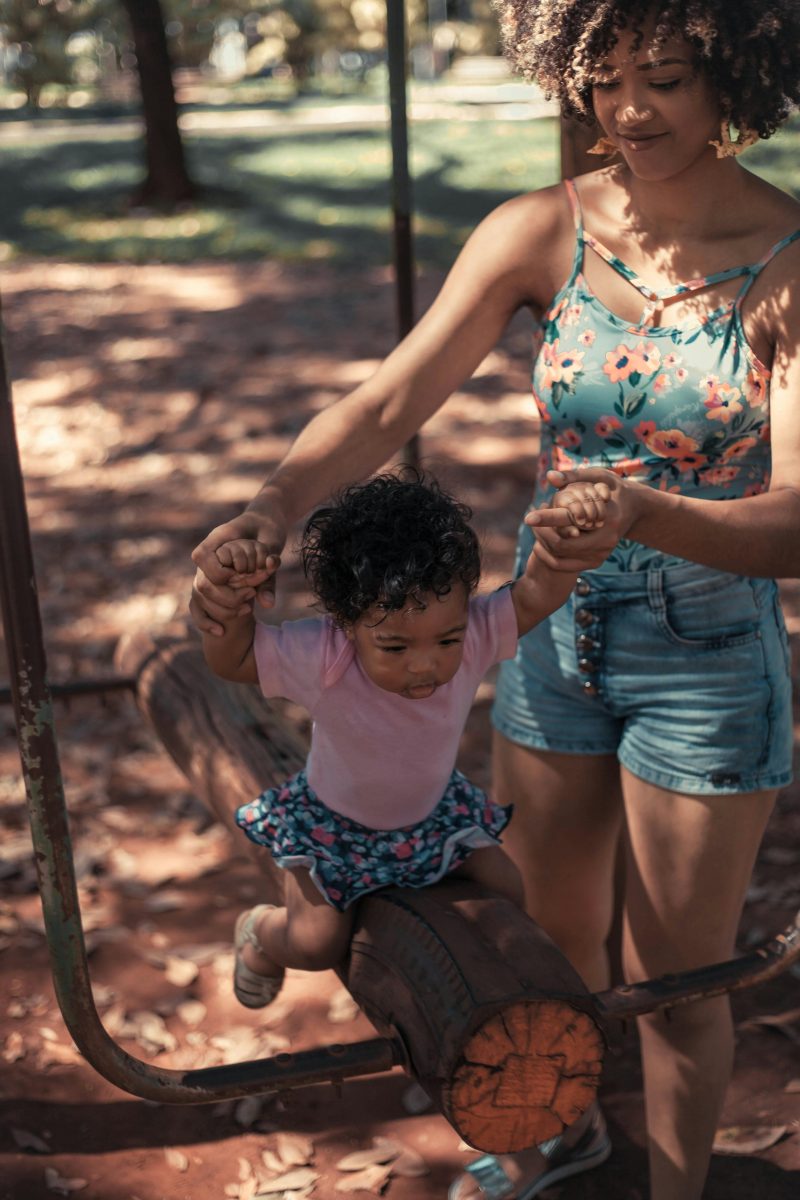Understanding Children’s Grief

Children experience grief with a distinct intensity, but it’s frequently misinterpreted. Children experience grief in ways that may not always be recognized as mourning, depending on their age. While school-aged children may exhibit anger or difficulty concentrating, toddlers may become more clinging. Teenagers may withdraw or take risks because they are juggling their own complicated emotions. It’s a common misconception that adults don’t need to grieve for children because they are too young to understand death. It is imperative to identify and manage these age-appropriate grieving expressions. By doing this, we assist them on their path to healing while also providing validation for their emotions. The first step in helping children cope with one of life’s most difficult experiences is to understand grief.
The Parent’s Function in Helping a Grieving Child

How to Balance Parenting and Personal Grief
Grief doesn’t distinguish between parents and children; it casts its shadow over both. In an attempt to support their children, parents find themselves walking a tightrope as they attempt to cope with their own profound loss. It’s a delicate dance, one that requires processing one’s own grief without allowing it to take precedence over the child’s needs. This delicate balance is essential because kids frequently look to their parents for coping mechanisms. Parents can create a stable environment where children feel comfortable expressing their own emotions by managing their own grief.
Open Communication Is Important
In times of grief, open communication serves as a bridge over choppy waters. It’s about establishing an environment where emotions are accepted and inquiries are addressed honestly. For kids, this transparency helps demystify death by making the incomprehensible just a little bit more manageable. Establishing a safe space for kids to express their worries and anxieties without passing judgment helps them feel safe and trusted.
As an Example, Adopting Good Grieving Habits
When their children are sailing through the rough seas of grief, parents are their guiding light. Parents set a powerful example for their children by modeling healthy grieving practices, such as getting help from friends, family, or professionals and finding productive ways to express their grief. Children learn from this example of coping and resilience that even though grief is a natural part of life, it doesn’t have to control it. It is to demonstrate to them that it is acceptable to weep, to miss the departed, and to experience happy moments even in the midst of grief.
- Strike a balance between your child’s needs and your own grief.
- To build trust, be open and truthful in your communication.
- Lead by example by practicing healthy bereavement.
Establishing a Helpful Environment

Preserving Customs and a Sense of Ordinance
Keeping routines gives kids a reassuring sense of stability during the chaos of grief. They can be grounded by consistent mealtimes, bedtimes, and even daily chores, which provide predictability in otherwise unpredictable times. This calls for a gentle structure that supports daily life rather than strict adherence to schedules. It’s about striking a balance and giving room for flexibility in times when grief gets too much to handle.
Promoting Grief Expression in a Range of Ways
Not all forms of grief are accompanied by tears or depression. It can sometimes take the form of storytelling, music, or art. It can be incredibly healing to support kids in finding different ways to communicate their grief. It could be through creating something in their honor, writing poetry, or creating drawings. These expressions give them a secure place to express their feelings and aid in their grief processing in a way that words alone are unable to do.
The Significance of Physical Comfort and Assurance
Never undervalue the impact that a hug can have. Giving a grieving child physical comfort, such as hugs, handshakes, or just sitting close, can give them a great sense of security. It’s a nonverbal way of saying, “I’m here with you; you’re not alone.” This comfort combined with spoken expressions of support and affection create the groundwork for recovery. These acts of kindness can serve as a ray of hope during trying times, reassuring kids that love is there for them even in the most dire circumstances.
- Observe routines to offer comfort and stability.
- Promote a range of grieving techniques through storytelling, music, and the arts.
- In order to communicate security and love, provide physical comfort and assurance.
You can find out more about helping bereaved children by going to the The website Beyond Blue provides tools and assistance for coping with bereavement.
Handling Tough Questions and Feelings

Methods for Responding to Difficult Conversations About Loss and Death
Be straightforward and honest when answering questions from kids about death. Keep your language age- and clarity-appropriate, and steer clear of euphemisms that might confuse them. Admitting that you don’t have all the answers is acceptable. This candor demonstrates that it’s acceptable to have thoughts and emotions related to death.
Handling Children’s Complex Emotions: Anger, Guilt, and Other
It can be confusing for children to experience such a whirlwind of emotions, ranging from guilt to anger. Recognize these emotions as typical aspects of grieving. Encourage them to use play, art, or conversation to express their feelings. This expression is essential to their recovery.
Speaking is not as vital as listening. Children sometimes need to express their emotions without looking for answers. It can be incredibly reassuring to just be there for them, give them a hug, or spend some quiet time with them.
The Value of Compassion and Patience in These Discussions
The key to navigating these conversations is patience. Youngsters grieve in their own time and manner. In an attempt to make sense of their loss, they might keep asking the same questions. Remind them that it’s acceptable to feel depressed, perplexed, or even furious by responding with constant love and support.
Understanding arises from realizing that every child’s experience of grief is different. A child’s comfort may not be the same for another. Continue to be aware of their needs and modify your assistance as they work through their feelings. This customized strategy creates a secure environment where they can heal.
Memorializing and Remembering: A Path to Healing

Healthy Ways to Keep the Memory of a Loved One Alive
Memorializing a loved one can be a powerful tool in the grieving process. Creating a memory box filled with photos and mementos allows families to revisit cherished moments.
Planting a tree or garden in their honor not only serves as a living tribute but also as a place of solace and reflection. These acts of remembrance help keep the memory of the loved one alive, providing comfort and a sense of continuity.
Involving Children in Memorial Activities
Children, too, can find solace in memorial activities. Encouraging them to draw pictures, write letters to the deceased, or participate in planning a memorial service makes them feel included and helps them express their grief.
Such activities offer a tangible way for children to understand and cope with loss, fostering a healthy grieving process.
The Role of Rituals and Anniversaries in the Grieving Process
Rituals and anniversaries play a crucial role in the grieving process. Marking the anniversary of a loved one’s passing with a special ritual, such as lighting a candle or sharing memories, can provide a structured time for reflection and remembrance.
These moments acknowledge the pain of loss while celebrating the life of the deceased. They remind us that, though our loved ones are gone, their impact on our lives endures.
Advancing Together

Recognizing Milestones in the Grieving Process
Grief is a journey, marked by milestones that signify healing. Acknowledging these moments – a first laugh after loss, a day when the pain feels lighter – is vital.
It’s a sign of the heart’s capacity to heal, even when we think it impossible. Celebrating these milestones fosters resilience, reminding us and our children that progress, no matter how small, is being made.
Fostering Resilience and Hope in the Face of Loss
Resilience is the light guiding us through the darkness of grief. It’s about finding strength in vulnerability, allowing ourselves and our children to feel the full spectrum of emotions that come with loss.
Hope then becomes our anchor, a promise that joy can be found again. Encouraging open conversations about feelings, and sharing stories of loved ones lost, weaves resilience and hope into the fabric of our family’s journey through grief.
The Ongoing Nature of Grief and How to Adapt Over Time
Grief is not a linear process; it ebbs and flows like the tide. Understanding this helps us adapt to its ongoing nature. As time passes, the intensity of grief may lessen, but the sense of loss remains.
Adapting means allowing ourselves and our children to revisit grief, to feel it anew at different stages of life. It’s about creating a space where grief and joy can coexist, teaching our children that it’s okay to miss someone deeply while also embracing life’s continuing adventures.
In Conclusion
Parenting through grief is a journey of love and resilience. It teaches us to balance sorrow with the ongoing rhythms of life. By embracing open communication, healthy grieving practices, and creating a supportive environment, we guide our children through the complexities of loss. These strategies not only foster resilience but also ensure that the memory of loved ones continues to inspire and comfort. As we move forward, let us hold onto the promise of healing and the strength found in shared moments of remembrance and hope.
Parenting Through Grief: How to Support Your Child FAQs
Yes, unresolved grief can impact a child’s emotional development and well-being, potentially leading to issues like depression or anxiety later in life. It’s important to monitor their adjustment over time and seek professional help if needed. Early intervention and support can mitigate long-term effects and help children learn healthy coping mechanisms.
Use simple, clear words that are age-appropriate, explaining that death means someone won’t be coming back. Avoid euphemisms that can confuse children, like “sleeping” or “lost,” and reassure them it’s okay to ask questions. It’s important to convey the finality of death in a gentle manner that they can grasp.
Encourage them to talk about their feelings, draw pictures, or use stories to help them express what they’re going through. Providing a variety of outlets for expression helps children process their emotions in a healthy way. It’s important to validate their feelings and let them know it’s okay to feel sad, angry, or confused.
Keeping to a regular schedule provides a sense of security and normalcy for children during a time of upheaval. It’s okay to adjust routines as needed, but try to maintain consistent bedtimes, mealtimes, and other daily activities. Balancing the need for structure with the understanding that flexibility may be necessary is key.
It’s okay to show your own grief, as it teaches children that feeling sad is a natural response to loss. However, try to maintain a level of stability and reassurance for your child, letting them know you’re there for them. Seeking additional support for yourself, whether through friends, family, or professionals, can help you be there for your child.
Answer their questions honestly but in a way that is appropriate for their age and development level. It’s okay to admit if you don’t have all the answers, but reassure them that it’s normal to have questions. Providing clear and comforting responses helps children feel more secure and understood.
Consider the child’s age, maturity level, and whether they want to go, as attending a funeral can be a way to say goodbye and understand the concept of death. Prepare them beforehand about what to expect and offer support throughout the service. It’s a personal decision that should be made with the child’s emotional well-being in mind.
Changes in behavior, sleep patterns, and appetite can indicate grief in children. They may also express their grief through play, drawings, or questions about the deceased. Recognizing these signs is crucial for providing the appropriate support and comfort.
Children process grief in different ways and may not show their feelings openly or immediately. It’s important to keep communication open and let them know it’s okay to talk about their feelings whenever they’re ready. Providing a supportive environment allows them to express grief in their own time and way.
There are many resources available, including counseling services, support groups specifically for children, and educational books and materials on grief. These resources can provide guidance and support for both you and your child through the grieving process. Exploring these options can help find the right support tailored to your child’s needs.

